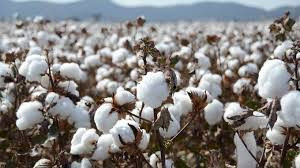
The Agricultural Marketing Authority (AMA) is exploring the establishment of a fund aimed at supporting cotton growers, as delayed payments and volatile prices continue to erode profits.
Cotton is Zimbabwe’s second-largest agricultural export after tobacco, but its growth has been hampered by erratic rainfall patterns, inconsistent policy support, late payments, and fluctuating global prices.
These factors have contributed to a sharp decline in output, with production collapsing from a peak of 350 000 tonnes to just 28 000 tonnes in the 2024/25 agricultural season.
AMA acting chief executive officer Jonathan Mukuruba said: “We are currently trying to create that fund in place to encourage all our farmers to produce.
“But we are also impressing upon our merchants to make sure that at least they intensify these essential services. It is not just a matter of giving someone inputs, and then you do some follow-ups.
“We are trying to create a stabilisation fund where, whatever prices these farmers get based on what is happening on the international market, we try to top it up through the stabilisation fund.”
He said the stabilisation fund was still at the conceptual stage, with modalities being developed to determine how it would be financed.
“It is still an initiative that we are working on. Right now, we are just trying to establish the modalities to say, along the value chain, where we can get extra cents here and there, we can then build up this particular fund,” Mukuruba explained.
- Former MP’s death exposes Zanu PF’s intolerance
- The Great Commission and the church (2)
- Zakaria, Baba Harare, Apama for Musabvunda event
- Chics’ Galaxy: Sha Sha headlines September’s Fiesta Fiesta Amapiano gig
Keep Reading
“We are still working on the initiatives, but I think very soon we should be providing more details on this one.”
The fund is expected to help growers receive better prices.
“That is the one that we are trying to cushion in terms of making sure that they get a better price when they deliver their cotton,” Mukumba said.
“But, in terms of where we want to get this money, that is where I am saying that we are looking at the whole value chain and seeing at which particular nodes we can get some extra cents.
“We should then come back and reinvest in terms of supporting the price that the farmer gets at a buying point, and this will be just additional cents (around 20–30 US cents) on the general market prices of cotton.”
He added that if successfully implemented, the initiative would help lift producer prices and restore confidence among smallholder growers.
“We think that if we are able to raise an additional 20 to 25 US cents or even 30 US cents more than whatever would have been paid as the best price when the farmer delivers, the farmer will then eventually get between 50 and 60 US cents in terms of the total value,” Mukuruba said.
According to financial services firm IH Securities, the average cotton yield in Zimbabwe over the past decade has been about 0,55 metric tonnes per hectare.
“Crop production is mainly from 300 000 small-scale farmers in the drier parts of the country, with the Midlands leading in crop production.
“Cotton production, a key source of cotton-seed cake for feed, has been muted due to climate-induced shocks, low yield, late farmer payments, poor market linkages, and fluctuating world prices,” IH Securities said.
“Zimbabwe’s cotton industry continues to face productivity challenges with a notable trend in declining output, and according to the Confederation of Zimbabwe Industries, production is down 96% in the last 13 years.”
Despite the decline in local output, Zimbabwe remains a net exporter of cotton lint in the region, with about 70% of total production shipped abroad.
IH Securities noted that cotton lint exports peaked at US$237 million in 2004 but had declined to US$46 million by 2022. However, the firm projected that the gross value would increase from US$69,76 million to US$91,84 million by the 2030/31 season.











